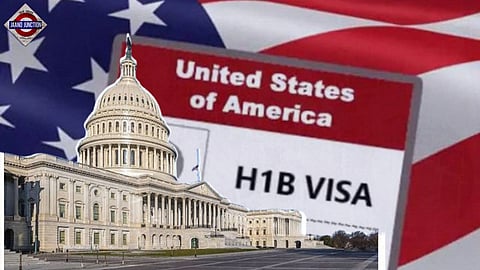

The US Citizenship and Immigration Services (USCIS) is preparing to conduct a lottery to select H-1B visa beneficiaries, including the master’s cap for advanced US degree holders. This comes with the closure of the initial H-1B sign-up period for the fiscal year 2025 on March 25.
The agency announced that it will notify all prospective petitioners with selected beneficiaries, indicating their eligibility to file an H-1B cap-subject petition.
Because the demand for H-1B visas is much more than what's on offer, the US agency uses a lottery system.
In recent years, Indian tech professionals have dominated the H-1B cap-subject visas, securing about 70% of the 85,000 visas available, including the 20,000 master’s cap for advanced US degree holders, according to Forbes.
In 2022, Indians secured 77% of the 320,000 approved H-1B visas. This year, the USCIS anticipates around 350,000 applicants, a decrease attributed to new measures against fraud.
The USCIS filing fee for beneficiaries on H-1B petitions will rise by 70%, while those on L-1 petitions will see a 201% increase, and individuals on O-1 petitions will face a 129% increase, according to the reports.
H-1B VISA FILING LOCATION CHANGES
The USCIS emphasised that any H-1B or H-1B1 (HSC) petitions received at a USCIS service centre on or after April 1, 2024, will be rejected without a grace period provided. To avoid rejection, petitioners must ensure that their petitions are filed at the correct location.
USCIS also launched an online filing for non-cap H-1B petitions on March 25, with an online filing for H-1B cap petitions set to begin on April 1 for selected petitioners.
FEE ADJUSTMENTS AND NEW FORM VERSIONS
Furthermore, USCIS reminded petitioners about the adjustment of fees for most immigration applications and petitions, effective April 1, 2024.
As USCIS transitions to lockbox and online filing for H-1B petitions, prepaid mailers will no longer be used for communication or final notices regarding H-1B or H-1B1 (HSC) petitions.
The postmark date of a filing will be used to determine the correct form version and fees, while the received date will apply for regulatory or statutory filing deadlines.
